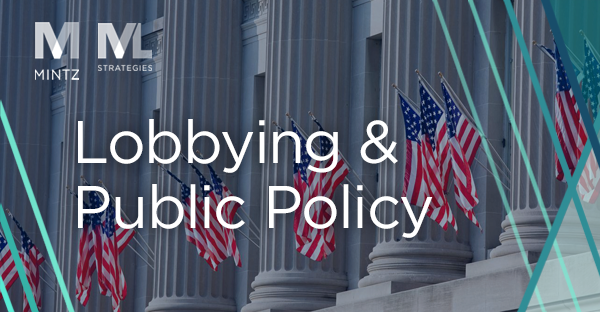FDA’s Ongoing Response to the COVID-19 (Coronavirus) Outbreak
As we write this update on the actions of the Food and Drug Administration (FDA), more state and local governments (along with private businesses and employers) are taking sweeping actions to protect the public from the continued spread of COVID-19. The federal response to what is now a pandemic of COVID-19 started off slowly, but we are now seeing frequent and promising announcements from FDA and other agencies within the Department of Health and Human Services.
We published our first installment highlighting FDA’s role in this public health emergency on March 4, 2020 (see our prior post here). In the two weeks that have elapsed since then, FDA has taken several actions related to COVID-19 testing and other important public health protections which are explained below. One of the most striking things about the list of actions included in this post may be how diverse and broad FDA’s authorities are and what a substantial role the agency plays in protecting Americans from a variety of different types of harm.
Expanding COVID-19 Diagnostic Testing
As discussed in our first post, FDA issued a policy on February 29, 2020, to allow certified clinical laboratories to develop and use COVID-19 molecular diagnostic tests prior to issuance of any emergency use authorizations (EUA) for such tests. (An EUA allows a test or other medical product to be marketed in an emergency without all the typical steps involved in premarket review.) The agency issued an EUA on the same day authorizing the emergency use of the New York State Wadsworth Center’s diagnostic test (this EUA was amended and reissued on March 15, 2020). On March 12, FDA announced that it would be allowing the New York State Department of Health (NYSDOH) to authorize New York clinical laboratories to use validated COVID-19 diagnostic tests on patients without first obtaining an EUA.
Also on March 12, the agency granted a third EUA for a COVID-19 diagnostic test – representing the first commercially distributed diagnostic test to receive an EUA during the COVID-19 outbreak – noting in its announcement that “FDA did not object to [the developer] pre-positioning its test so that labs could be ready to initiate testing immediately upon authorization of the EUA. Because of that pre-positioning, laboratories can immediately run tests on [this] high-volume platform, which will greatly increase national testing capacity.”
FDA then granted a fourth EUA for a COVID-19 diagnostic test on March 13, 2020, this time highlighting in its public announcement that the agency issued the EUA within 24 hours of receiving the request from the commercial test developer. Most recently, on March 16, FDA updated its FAQ webpage on diagnostic testing to add information about extraction platforms for COVID-19 (see here) and issued additional EUAs covering two more commercial lab tests.
Further, and perhaps most significantly, the agency announced that it does not intend to object to the development and deployment of tests without first securing an EUA if certain criteria are met. This significant policy change is explained in a guidance document for clinical laboratories and diagnostic developers that is an update of the original policy document released for clinical labs only on February 29, 2020. The updated guidance document also provides recommendations for test developers who may wish to develop serological tests for use during this coronavirus outbreak. (Serological tests are less effective for diagnosis than molecular tests but can still be an important tool in increasing the number of people tested.)
FDA’s new policy requires:
- The test to go through a state regulatory approval process (which does not have to be the same as the system already being used by the NYSDOH, as authorized by FDA on March 12).
- If the test developer is a clinical laboratory, then no subsequent EUA submission will be required, although FDA does request that states notify the agency of their actions to approve such tests.
- If the test developer is a commercial manufacturer, FDA does not intend to object to the distribution and use of such tests on clinical specimens after the manufacturer’s validation of the test so long as instructions for use and data about the test’s performance characteristics are made available and an EUA is submitted to FDA within 15 days of completing validation.
- For serological tests in particular, all of those same criteria apply, but this subset of tests is subject to an additional requirement to be labeled with appropriate warnings, including information about the test’s effectiveness and that it was not reviewed by FDA.
As FDA Commissioner Stephen Hahn emphasized in the March 16 announcement of the updated policy for diagnostic tests, the agency’s new policy is “unprecedented” and hopefully “will help address these urgent public health concerns by helping to expand the number and variety of diagnostic tests, as well as available testing capabilities in health care settings, and reference and commercial laboratories.”
Much mainstream press in the past few weeks has been devoted to lack of test availability and issues with an early CDC-developed test. The issuance of more EUAs is intended and expected to dramatically increase the number of tests conducted within the U.S. With more testing available, we expect to see the number of confirmed cases of COVID-19 rise, although social distancing measures recommended (and in some cases mandated) by federal, state, and local governments should (if taken by all community groups) temper the spread of the disease.
Finally, we mentioned in our first blog post on this topic the possible introduction of a diagnostic reform bill called the VALID Act. This bipartisan and bicameral legislation has since been introduced in Congress; more details about the bill’s provisions can be found in this blog post from last week. ML Strategies also recently published alerts on the federal response to COVID-19, which are available here and here.
Recent Non-Diagnostic FDA Actions Related to COVID-19
In addition to those very important diagnostic testing-related actions taken by FDA to expand the availability of testing for the virus nationwide, the agency has also stepped up its regulatory and enforcement activities in many other areas.
- On March 9, FDA and the Federal Trade Commission (FTC) jointly issued warning letters to seven companies for fraudulent product claims relating to COVID-19. The FDA’s press release about this action is available here and the FTC’s press release is available here. The agency also noted the following ongoing activities to protect consumers from this type of insidious behavior:
“An FDA cross-agency task force has been established and dedicated to closely monitor for fraudulent products related to COVID-19. The task force has already reached out to major retailers to ask for their help in monitoring their online marketplaces for fraudulent products claiming to combat coronavirus and other pathogens. The task force has already worked with major retailers and online marketplaces to remove more than three dozen listings of fraudulent COVID-19 products. Several have already agreed to monitor their marketplaces for COVID-19 claims.”
Considering the FDA (and its predecessors) were established in large part to prevent the marketing of fraudulent (i.e., misbranded and adulterated) food and medical products, the agency has several authorities that could be used in this situation to protect patients and consumers, including—if needed—seizing such fraudulent products and imposing fines on offending manufacturers and distributors.
- On March 10, FDA announced a halt to non-mission-critical inspections of foreign facilities that manufacture regulated medical products intended for sale and distribution in the U.S. At the same time, however, the agency emphasized that it will use additional measures to ensure the safety of imported foods and medical products, noting that it has clear authority to “refuse admission of products that fail sample testing or may violate other applicable legal requirements.” We would not be surprised to also see a curtailment of domestic inspections.
- On March 11, FDA issued a letter to healthcare providers recommending strategies for conserving personal protective equipment (PPE), such as surgical masks, gowns and suits, in light of potential supply shortages or disruptions. It also developed a webpage with answers to common questions about PPE shortages, which is available here.
- On March 14, FDA issued an immediately-in-effect policy that provides guidelines to pharmacists who wish to compound alcohol-based hand sanitizers. The agency also stated its intent not to take enforcement action against pharmacists that comply with the criteria set forth in the policy, including that pharmacists conduct such compounding within state-licensed pharmacies, federal facilities, or registered outsourcing facilities (also referred to as “503B compounding facilities”).
We will continue to monitor the federal response to coronavirus from a variety of legal and regulatory angles and provide updates here. Stay healthy!

FDA’s Evolving Response to the COVID-19 (Coronavirus) Outbreak
March 4, 2020| Blog|



